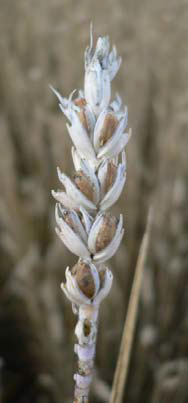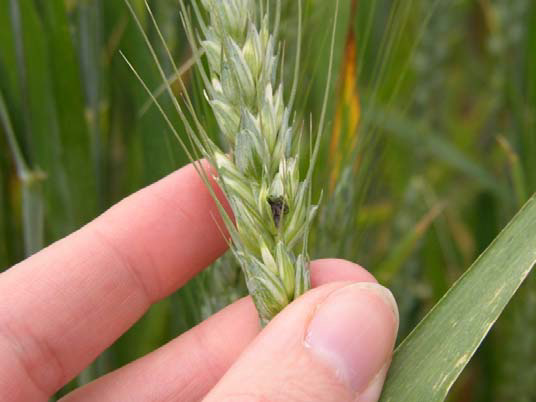|
WHAT IS COMMON BUNT ? Common bunt is a fungus with a high propagation rate that damages grain quality and is seed-borne. The disease is caused by two closely related species: Tilletia caries (syn. Tilletia tritici) and Tilletia foetida (syn. Tilletia laevis). Tilletia caries is the most widespread form in France, but it is not uncommon to find a mixture of the two species in the fields. Following the use of synthetic phytosanitary products since the 1950s, bunt symptoms had basically disappeared from cereal fields and farmers no longer knew how to recognise them. Its reappearance over the past 15 years, particularly in organic systems, requires that concerned actors reappropriate the knowledge of this disease and of the management strategies available in organic farming. The risks - Up to 30 and even 40% yield losses   - Up to 70% of the ears can be infected - unmarketable harvests - Contamination of the soil Seed is the primary source of infection, but bunt spores can survive in the soil for several years, thus presenting another source of infection. Adjacent picture (right, © CA 77) : bunted ear, kernels have a dishevelled, messy appearance Adjacent picture (left, © ITAB) : Bunted wheat ear at flowering season. The "kernel" has been opened with a nail, the black mass of spores is already visible. The disease cycle of bunt  Mathre, D.E. 2000.
Stinking smut of wheat. The Plant Health Instructor. DOI:
10.1094/PHI-I-2000-1030-01 >> Weather conditions favouring the development of common bunt : Soil humidity between 40 and 50% Temperatures : • Between 2 and 29°C (optimum at 11°C) for T. Caries • Between 15 and 20°C for T. foetida References : UFS Semenciers and Université d'Angers Other bunt species Other bunt species affecting wheat occur in the world, but not in France. Dwarf bunt (Tilletia controversa) causes wheat dwarfing in mountain areas, in addition to symptoms similar to those of common bunt. It occurs in the Swiss or Austrian Alps, for example. Karnal bunt (T. indica) occurs mainly in India and its neighbouring countries, North America and South Africa. It is regulated as a quarantine pest in Europe. (Manage common bunt) |

